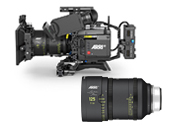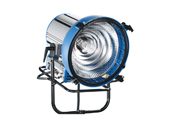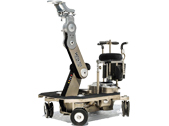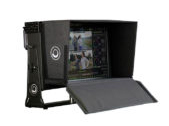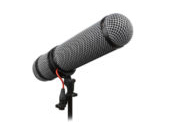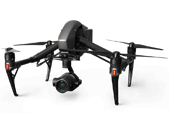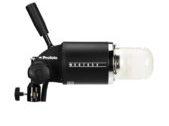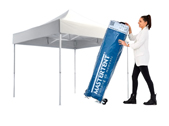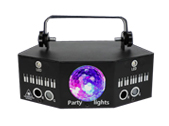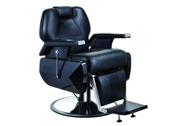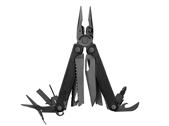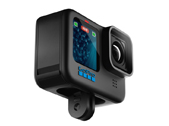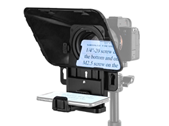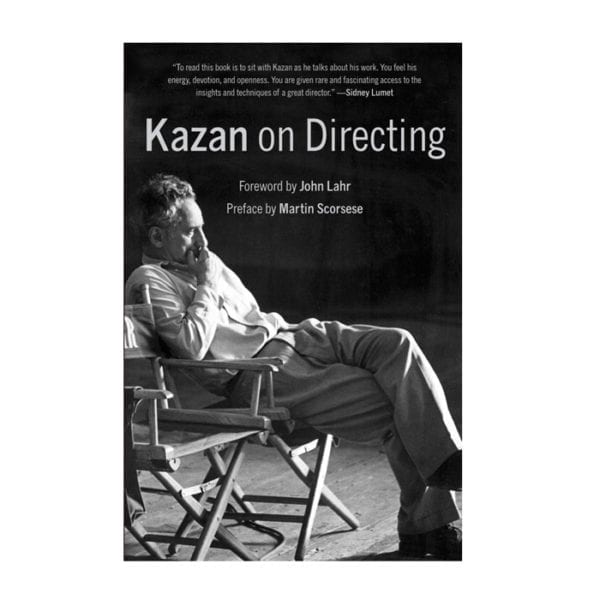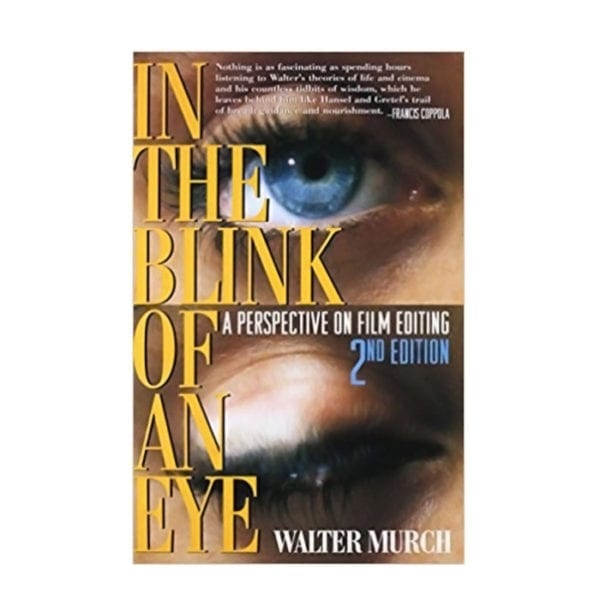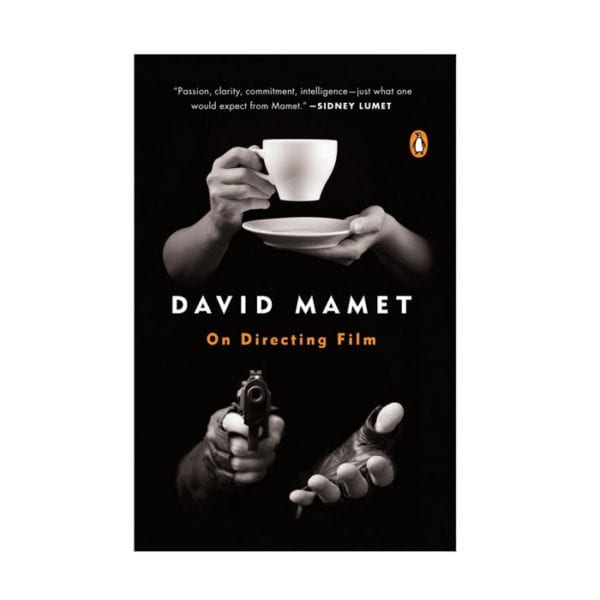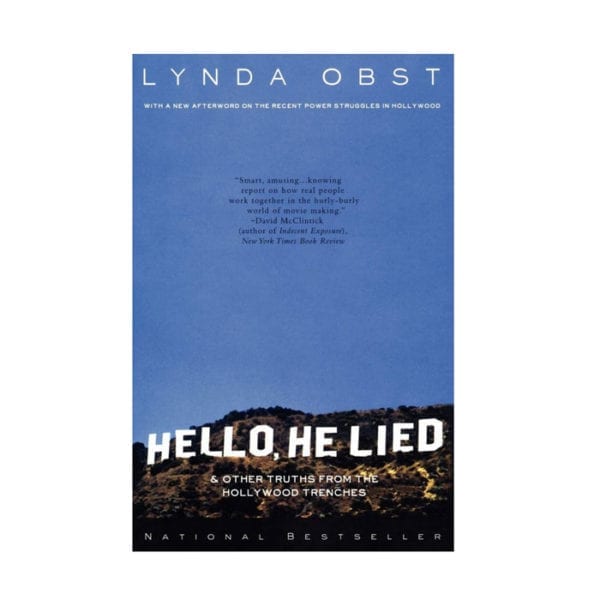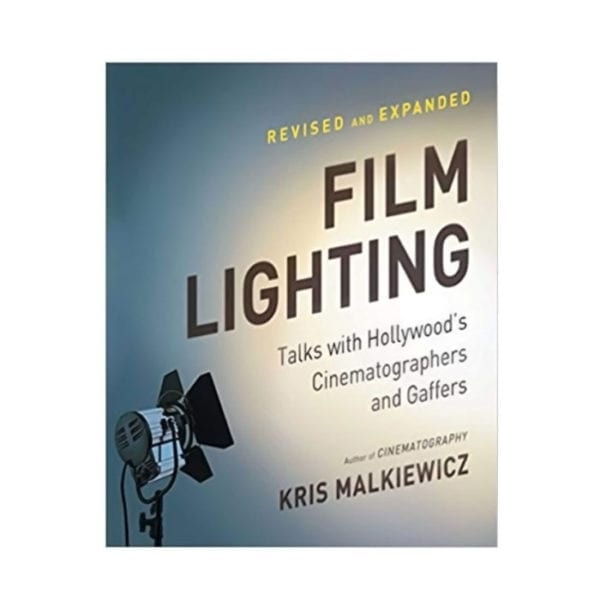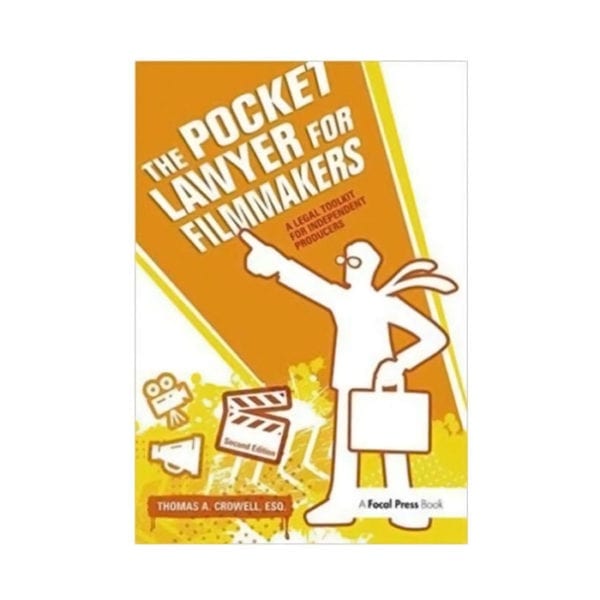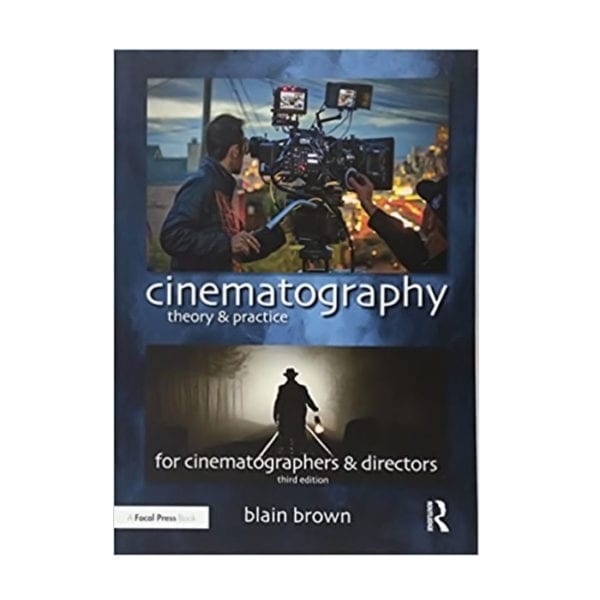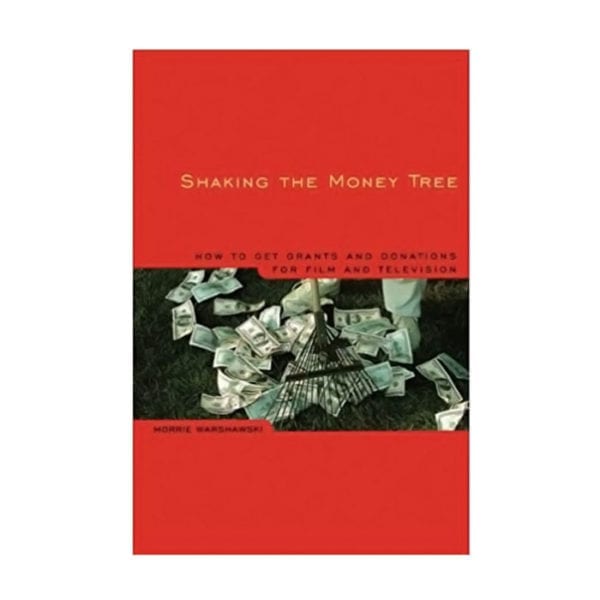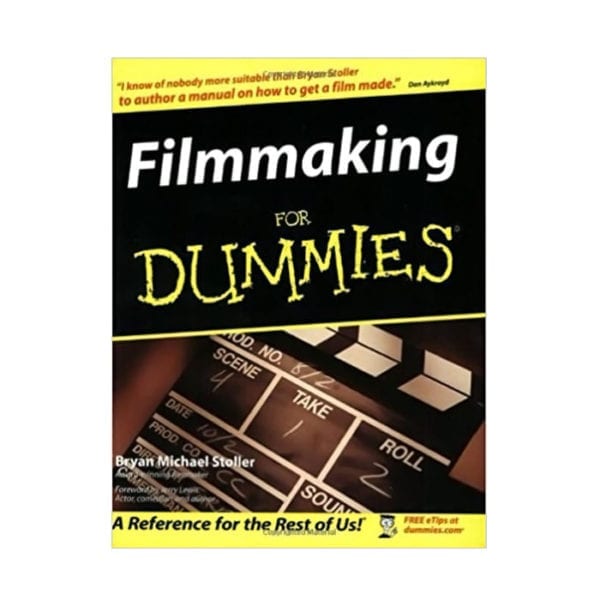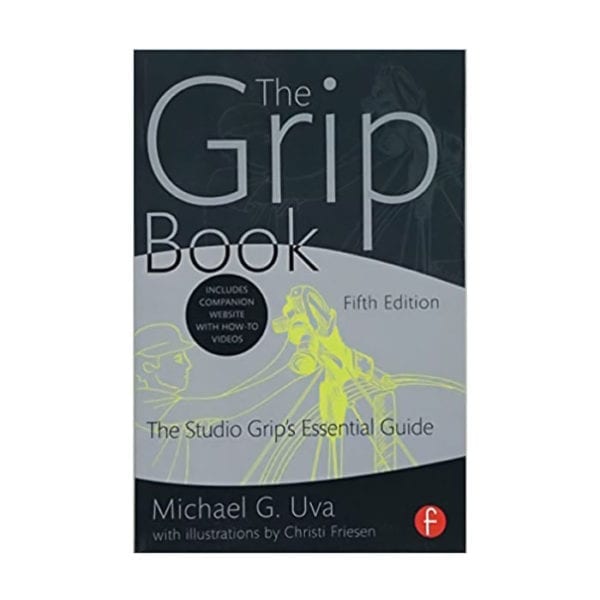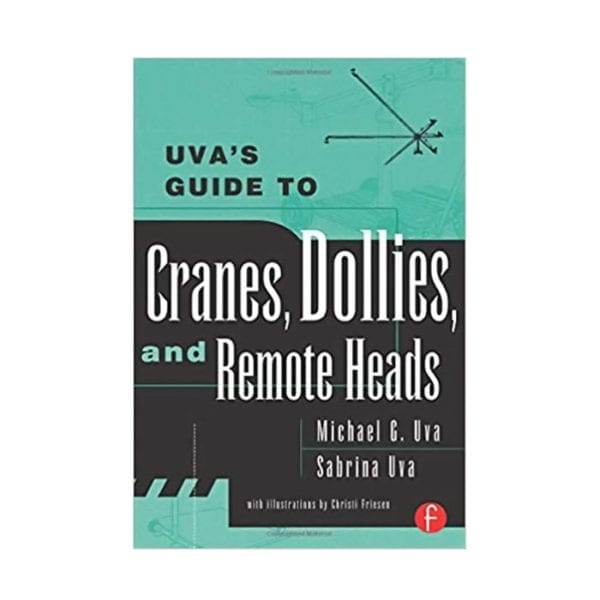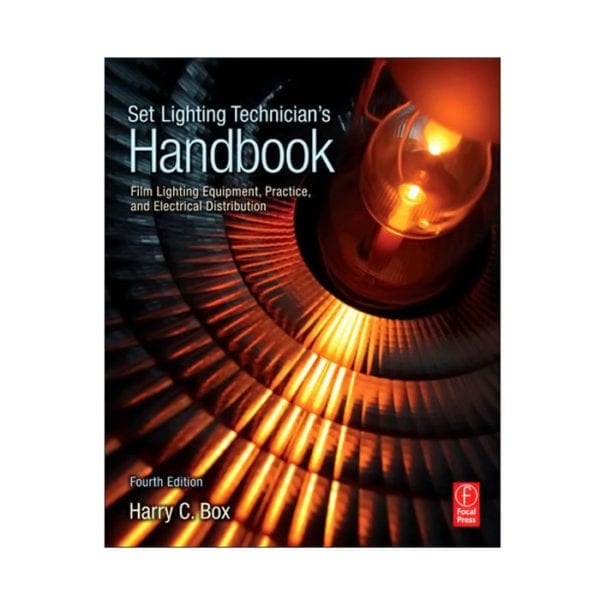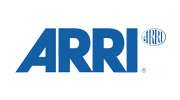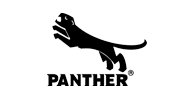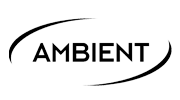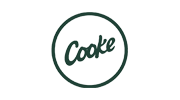Kazan on Directing by Elia Kazan
Elia Kazan was the mid-twentieth century’s most celebrated director of both stage and screen, and this book shows us the master at work.
Kazan directed virtually back to back the greatest American dramas of the era—by Arthur Miller and Tennessee Williams—and revolutionized theatre and film with dynamic action, poetic staging, and rigorous naturalism. His list of Broadway and Hollywood successes—A Streetcar Named Desire (stage and screen), All My Sons, Death of a Salesman, Cat on a Hot Tin Roof, On the Waterfront, East of Eden, Baby Doll, America America, to name only a few—is a testament to his profound impact on the art of directing. Kazan’s insights into these and other classic stage works shaped their subsequent productions—and continue to do so. There is no directorial achievement in America equal to his.
This remarkable book, drawn from his notebooks, letters, interviews, and autobiography, reveals Kazan’s method: how he uncovered for himself the “spine” or core of each script and each character; how he analyzed each piece in terms of his own experience; how he determined the specifics of his production, from casting and costuming to set design and cinematography. And we see how he worked with writers on scripts and with actors on interpretation.
The final section, “The Pleasures of Directing”—essays Kazan was writing in his last decade—is informal, provocative, candid, and passionate; a wise old pro sharing the secrets of his craft, advising us how to search for ourselves in each project, how to fight the system, and how to have fun doing it.
Published in Kazan’s centenary year, this monumental, revelatory book, edited by Robert Cornfield, is essential reading for everyone interested in American movies and theatre.
In the Blink of an Eye by Walter Murch
In the Blink of an Eye is celebrated film editor Walter Murch's vivid, multifaceted, thought-provoking essay on film editing. Starting with what might be the most basic editing question - Why do cuts work? - Murch treats the reader to a wonderful ride through the aesthetics and practical concerns of cutting film. Along the way, he offers his unique insights on such subjects as continuity and discontinuity in editing, dreaming, and reality; criteria for a good cut; the blink of the eye as an emotional cue; digital editing; and much more. In this second edition, Murch reconsiders and completely revises his popular first edition's lengthy meditation on digital editing (which accounts for a third of the book's pages) in light of the technological changes that have taken place in the six years since its publication.
On Directing Film by David Mamet
According to David Mamet, a film director must, above all things, think visually. Most of this instructive and funny book is written in dialogue form and based on film classes Mamet taught at Columbia University. He encourages his students to tell their stories not with words, but through the juxtaposition of uninflected images. The best films, Mamet argues, are composed of simple shots. The great filmmaker understands that the burden of cinematic storytelling lies less in the individual shot than in the collective meaning that shots convey when they are edited together. Mamet borrows many of his ideas about directing, writing, and acting from Russian masters such as Konstantin Stanislavsky, Sergei M. Eisenstein, and Vsevelod Pudovkin, but he presents his material in so delightful and lively a fashion that he revitalizes it for the contemporary reader.
Hello, He Lied by Lynda Obst
"Never go to a meeting without a strategy." "Ride the horse in the direction it's going." These are just two of the gems unearthed from the trenches of Hollywood by Lynda Obst, one of the most successful producers in the movie business today. In Hello, He Lied, Obst offers real, practical advice to would-be professionals in any field: "Thou shalt not cry at work," "thou shalt not appear tough," "thou shalt return all thy phone calls," and more. She takes us inside high-pressure meetings with David Geffen, onto the set of Sleepless in Seattle, and into the heated negotiations for The Hot Zone and reveals what she's learned in more than twenty years in the business: how to swim with the sharks and not get eaten.
Film Lighting Talks with Hollywood’s Cinematographers and Gaffers by Kris Malkiewicz
Film Lighting is an indispensable sourcebook for the aspiring and practicing cinematographer, based on extensive interviews with leading cinematographers and gaffers in the film industry Film lighting is a living, dynamic art influenced by new technologies and the individual styles of leading cinematographers. Reporting on the latest innovations and showcasing in-depth interviews with industry experts, Film Lighting provides an inside look at how cinematographers and film directors establish the visual concept of the film and use the lighting to help tell the story. This edition provides an invaluable opportunity to learn from the industry’s leaders.
Focal Press Book: The Pocket Lawyer for Filmmakers A Legal Toolkit for Independent Producers by Thomas Crowell
Cinematography: Theory and Practice, Second Edition: Image Making for Cinematographers and Directors by Blain Brown
The world of cinematography has changed more in the last few years than it has since it has in 1929, when sound recording was introduced. New technology, new tools and new methods have revolutionized the art and craft of telling stories visually. While some aspects of visual language, lighting and color are eternal, shooting methods, workflow and cameras have changed radically. Even experienced film artists have a need to update and review new methods and equipment. These change affect not only the director of photography but also the director, the camera assistants, gaffers, and digital imaging technicians.
Cinematography: Theory and Practice covers both the artistry and craftsmanship of cinematography and visual storytelling. Few art forms are as tied to their tools and technology as is cinematography. Take your mastery of these new tools, techniques, and roles to the next level with this cutting-edge roadmap from author and filmmaker Blain Brown.
Whether you are a student of filmmaking, just breaking into the business, currently working in the industry and looking to move up to the next level, or an experienced professional who wants to update their knowledge of tools and techniques, this book provides both a basic introduction to these issues as well as more advanced and in-depth coverage of the subject.
The companion website features additional material, including lighting demonstrations, basic methods of lighting, using diffusion and other topics.
Topics Include:
- Visual language
- Visual storytelling
- Continuity and coverage
- Cameras and digital sensors
- Exposure techniques for film and video
- Color in-depth
- Understanding digital images
- Waveform monitors, vectorscopes, and test charts
- Using linear, gamma, and log encoded video
- Image control and grading on the set
- The tools and basics of film lighting
- ASC-CDL, ACES and other new methods
- Optics and focus
- Camera movement
- Set operations
- Green screen, high speed and other topics
Shaking the Money Tree, 2nd Edition: How to Get Grants and Donations for Film and Video by Morrie Warshawski
Filmmaking for Dummies by Bryan Michael Stoller
Film is a powerful medium. Successful filmmakers possess the passion to visually tell a story that will affect people's emotions, make them see things differently, help them discover new ideas, or just create an escape for them.
Whether you love the experience of being enthralled by movies or the excitement, challenge, and magic of making the movie yourself, Filmmaking For Dummies is your primer to creating a respectable product. For the seasoned professional, this friendly reference can inspire you with fresh ideas – before you embark on your next big flick. Get ready to roll with expert information on
- Defining the difference between independent and studio films
- Knowing what genre fits your fancy
- Finding perfect locations
- Storyboarding your film
- Directing the action
- Giving credit and titles
- Writing or finding a screenplay
- Raising financing for your film
- Budgeting and scheduling your film
- Hiring the right actors and crew
- Planning, shooting, and directing your film
- Putting your film together in the editing room
- Finding a distributor to get your film in from of an audience
- Entering (and maybe even winning) film festivals
Focal Press Book: The Grip Book: The Studio Grip’s Essential Guide (5th Edition)
Gain the essential skills of a professional grip to become the jack and master of all trades on a movie or television show set. Discover vital insider tips ranging from how to operate cutting-edge rigging and lighting equipment to performing difficult camera mounts on aircraft, boats, cars, and trains.
In The Grip Book, Fifth Edition, seasoned Hollywood grip Michael G. Uva teaches you to install, set up, maintain, and ensure the safety of all equipment on a set, such as C-stands, cameras, and any specialty gear needed for a shoot. Guidelines for on-set etiquette and how to succeed as a technical crew member will jumpstart your career and make you a valuable asset on any film or television crew. This newly enhanced edition marks the 25th anniversary of a Focal Press classic and has been updated to include:
- A 4-color insert covering greenscreen setup
- Technical expertise on maintaining the latest and greatest filmmaking equipment
- Engaging how-to videos on the companion website (www.focalpress.com/9780415842372) which demonstrate techniques described in the book
- A completely new test section with over one hundred questions and answers, allowing you to quiz yourself on the techniques and concepts you’ve just read
- Guidelines on what a grip has to be physically able to perform in their day-to-day duties
- A European-specific appendix that features a table of European grip terms and their American equivalents
Focal Press Book: Uva’s Guide To Cranes, Dollies, and Remote Heads (1st Edition)
Uva's Guide To Cranes, Dollies, and Remote Heads is a comprehensive guide to all the latest equipment-what it is, how to use it and where to find it. This new book is designed to provide the more experienced professional with a streamlined reference to the equipment without the how-to information beginners require. Like the Grip Book 2E, it lists standards and features of all the different types of equipment covered, and with the recent explosion of new equipment introduced into the film industry this reference is invaluable!
As a reference guide, Uva's Guide To Cranes, Dollies and remote heads provides must-have information for a larger group of film professionals. Producers, directors, and DPs, and others responsible for securing equipment for a project will consider this an indispensable tool that will become an industry standard.
Comprehensive guide to all the latest equipment Offers a streamlined reference to the equipment without the how-to information beginners require Accessible to Directors, Producers, Production managers, and DPs, as well as to Grips and other film technicians.
Focal Press Book: Set Lighting Technician’s Handbook: Film Lighting Equipment, Practice, & Electrical Distribution (Fourth Edition)
Comprehensive, detailed and practical, the fourth edition of the Set Lighting Technician's Handbook: Film Lighting Equipment, Practice, and Electrical Distribution from Focal Press is a friendly, hands-on manual covering the day-to-day practices, equipment, and tricks of the trade essential for anyone implementing motion picture lighting, including the lamp operator, rigging crew, gaffer, best boy, or director of photography. This handbook offers a wealth of practical technical information, useful techniques, as well as aesthetic discussions.
The Set Lighting Technician's Handbook focuses on what is important when working on-set: trouble-shooting, teamwork, set protocol, and safety. It describes tricks and techniques for operating a vast array of lighting equipment including LEDs, xenon lights, camera synchronous strobes, black lights, underwater units, lighting effects units, and many others. Since its first edition, this handy on-set reference continues to be widely adopted as an instruction manual by union training programs as well as top university film production curriculums.
About the Author: Harry C. Box has worked in television and motion picture production since 1989. Over the years he has performed substantial work as a lighting technician, gaffer, camera operator, director of photography, and as an educator. His recent credits include network and cable television series, such as Heroes (NBC), Brothers and Sisters (ABC), and Everybody Hates Chris (CW). He has worked on major motion pictures, independent feature films, telefilms, documentaries, music videos, commercials, and industrial productions.
New to the Fourth Edition
- Detailed information on LED technology and gear
- Harmonized with union safety and training procedures
- All the latest and greatest DMX gadgets, including remote control systems
- Details on how to use and troubleshoot many new and useful lights
- New additions to the arsenal of electrical distribution equipment that make our sets safer and easier to power
- More rigging tricks and techniques
- The same friendly, easy to read style that made the original version of this book so popular
Contents
- Preface
- Companion Website
- Acknowledgements
- Chapter 1 - Set Basics: Your First Barbecue
- Chapter 2 - Pre-production Planning: Lighting Package, Expendables and Personal Tools
- Chapter 3 - Light Fixtures:The Basic Tungsten Lighting Arsenal
- Chapter 4 - Stands & Rigging
- Chapter 5 - Lighting Objectives & Methods
- Chapter 6 - Manipulating Light: Tools, Techniques, and the Behavior of Light
- Chapter 7 - Electrician's Set Protocol
- Chapter 8 - Light Fixtures: The HMI Arsenal
- Chapter 9 - Fluorescent Lights
- Chapter 10 - LED Lights
- Chapter 11 - Lighting Control: Control Networks, Moving Lights, Advanced Devices, and Computer
- Applications in Lighting
- Chapter 12 - Electricity
- Chapter 13 - Distribution & Dimming Equipment
- Chapter 14 - Working with Electrical Power
- Chapter 15 - Electrical Rigging
- Chapter 16 - Power Sources
- Chapter 17 - Special Circumstances and Practices
- Chapter 18 - Specialty Lighting Equipment
- Appendix A: Photometric Calculations & Tables
- Appendix B: Lamp Tables
- Appendix C: Flicker-Free Frame Rates
- Appendix D: Electrical Tables
- Appendix E: IP & NEMA Equipment Ratings
- Appendix F: Equipment Suppliers & Manufacturers
- Appendix G: Lighting Equipment Order Checklist
- Appendix H: Expendables Checklist
- Appendix I: Gels & Diffusions
- Glossary
- Index

